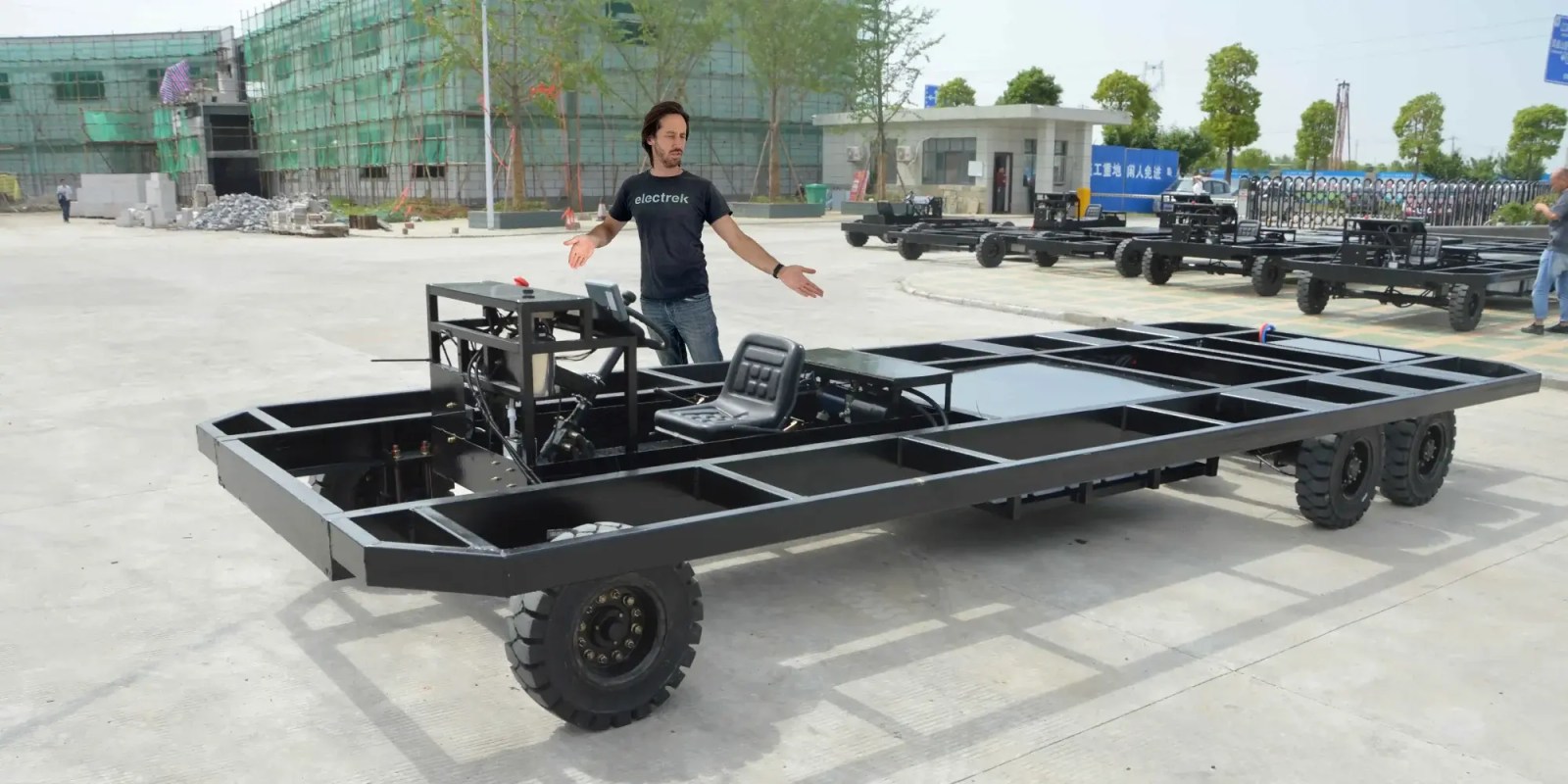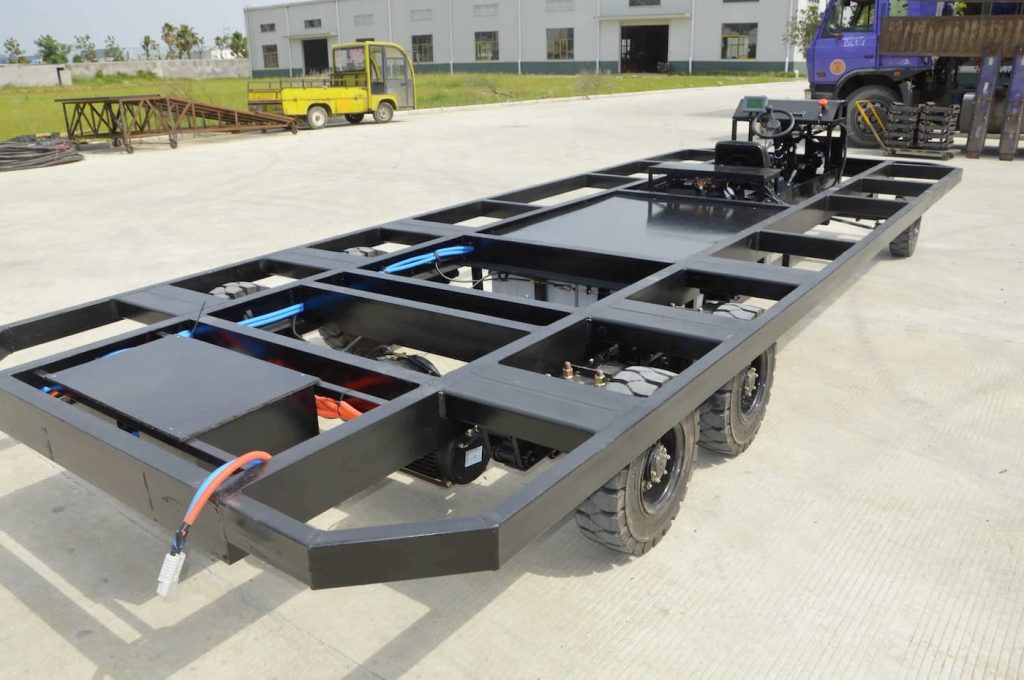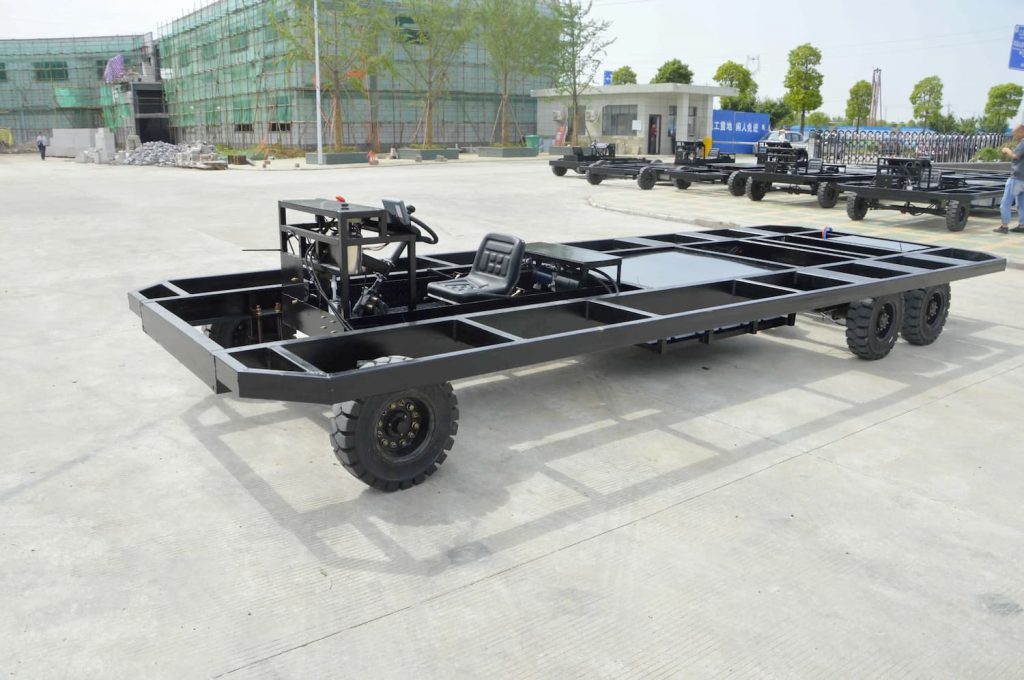
It seems like every new electric vehicle unveiling now starts with showing off a new ‘skateboard’ design, or the chassis of the vehicle that houses everything it needs to make it run. The motors, controllers, batteries, and everything else is usually built into a flat deck connected to the wheels, meaning the rest of the vehicle is basically just bolted on top. The engineer in me always thought it’d be fun to have just the bare skateboard, meaning you could go wild with your ideas of what to put on top. As it turns out, China already had that idea.
The result is what they call a parade float chassis, just built on a 100% electric drivetrain.
It’s basically the classic EV skateboard, just a lot less fancy-looking.
Like most of the fun and more-or-less functional EVs covered as part of this weekly Awesomely Weird Alibaba Electric Vehicle of the Week column, this parade float chassis isn’t a high-performance vehicle.
The top speed is limited to 15.5 mph (25 km/h), and the range of 50-60 miles (80-100 km) isn’t going to handle more than around-town tasks. But then again, how far do parade floats typically travel? “Around-town” is kind of their bread and butter.

The real beauty is just how customizable everything is. And since you’re starting with an electric vehicle drivetrain, it’s also incredibly simple to work on.
You don’t have to worry about engine maintenance or routing exhaust (or burning your streamers on hot pipes). You can keep the batteries neatly tucked away below the floor and the electronics sheltered in their own waterproof box.
From there, the sky is the limit! There seem to be different models, but I like this six-wheel version since you can conceivably build larger and heavier platforms on it. Imagine turning this into all sorts of fun vehicles, like a paintball technical, an electric market cart for selling food or crafts, or your own electric camper van.
An electric tiny home would also be a cool project. Many tiny homes are built on utility trailers to make them easy to move with a truck, but in this case you wouldn’t even need a truck. The tiny home could spend the majority of its life parked, and the drivetrain would just spring into action when you want to move it around or change scenery. Plus, the batteries could normally serve to power the tiny home and its off-grid system, so you wouldn’t even need a separate battery bank. Hmm, I’m getting really excited about the potential of an electric tiny house on this thing!

Those are just a few of my ideas, but I’m sure that I’m not the most creative guy out there.
What would you do with a blank canvas of an electric vehicle like this? Let’s hear your ideas in the comment section below!
